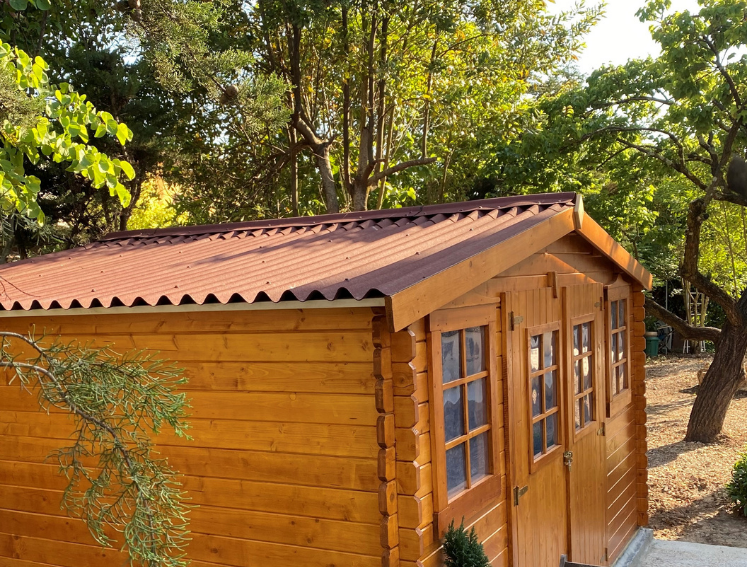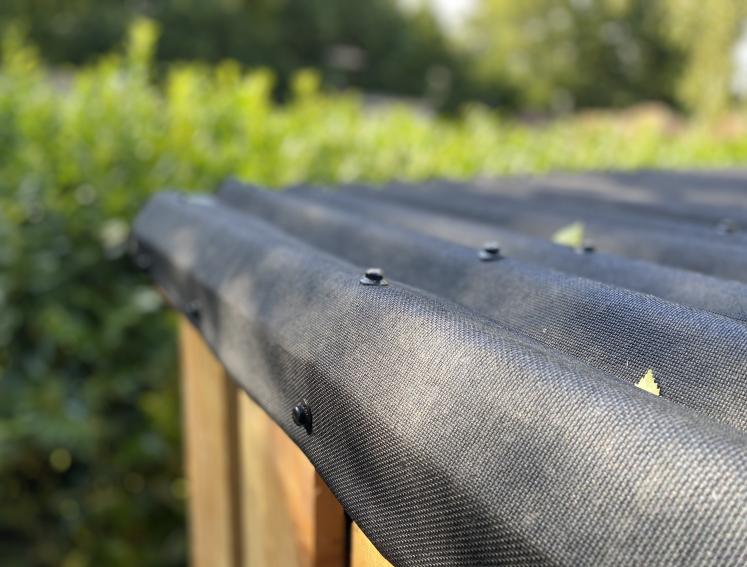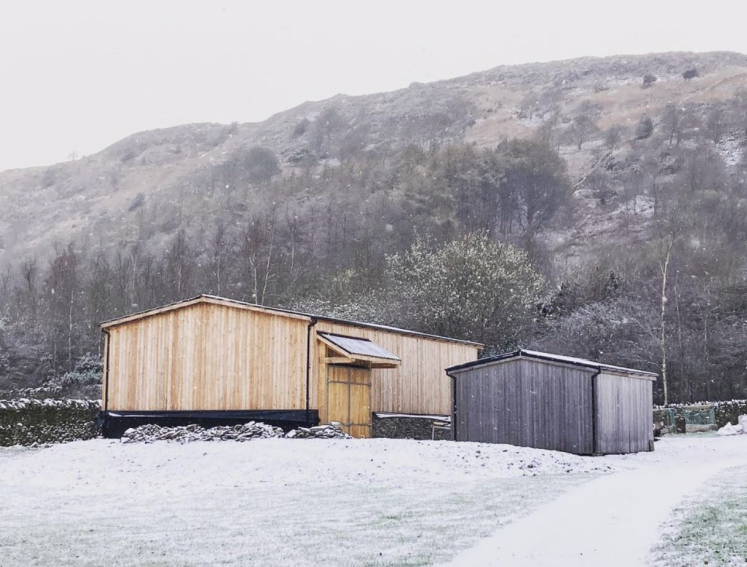Take care of your shed roof to stop it from sagging and leaking. Here are our top tips on how to maintain your shed roof!
Shed roof maintenance, it’s not the most exciting of tasks but it is necessary if you want to keep your roof in tip-top condition for years to come. Our durable corrugated roofing sheets all come with a minimum 10-year guarantee offering you a long-lasting shed roof but as with any other roofing solution, regular maintenance and upkeep is key to guaranteeing the life of your roofing.
Here’s everything you need to do to care for your Onduline roof….
Remove build up
Autumn leaves sure are pretty but they’re not so good for your shed roof so you need to regularly clean out and remove leaf debris from your roof, especially during the autumn/winter months as the leaves start to fall. Why? A buildup of debris can form a leaf mould which in turn can soften the roofing sheets and make them less effective. More on other moulds later - try to contain the urge to scroll down and skip a section ;p
Keep branches at bay

Those pesky trees are out to get us!
Another key job is to ensure tree and shrub branches are regularly trimmed so they don’t come into contact with your roofing sheets. One strong gust of wind and a rogue branch could seriously damage your roof, and we don’t want that, do we?
Keep your roofing sheets clean
Keeping mould and mildew at bay is another important part of your roof maintenance. Left untreated, lichen (a type of alga/fungus) can cause damage to the colour pigmentation and resin coating to our bituminous sheets causing degradation to the sheet structure. The good news...prevention is quite straightforward! All you need to do is keep the surface of your roof clean by using a mild cleaning detergent, rinsing it off with the hose. However, do not use a high-pressure jet washer as these can cause damage to your roofing sheets.
Continuous problems with mould? Again, cleaning the sheet will help but you may also want to consider how you can encourage ventilation in your building/structure. Our ONDUTISS membranes and foam eaves fillers can help with this.
For an even more thorough clean of mould-infected roofing, simply treat the underside of the Onduline sheets - and timber surfaces in contact with the sheet - with a diluted bleach solution (maximum concentration = 1 part bleach to 8 parts water). Use a brush to apply this solution to the affected areas and finish by rinsing off the solution with clean water after 30 minutes.
Brush your roofing sheets regularly

To remove messy moss
Another one of nature’s joys is moss, not so great for your roofing. This very simple plant form absorbs moisture directly from the roof surface and tends to thrive in damp and shady places such as in gutters. North facing, or shaded roofs tend to have more issues with moss as these provide the perfect conditions for it to grow. Again, this issue is simply solved with regular brushing to keep the moss at bay, and it will keep your roof looking as good as new too. We would recommend using a coarse bristle brush and, again, steering clear of that pressure washer.
This is snow joke

It may look pretty but...
In the winter months, as we gawp from our windows in delight at the tumbling snowflakes, roofing systems across the country shriek in fear. Luckily, our roofing sheets are durable and can withstand extreme temperatures but prolonged exposure to a heavy load can have an adverse effect on your overall roofing structure. Whilst a snow-covered shed roof does look pretty, it’s best to brush this off to keep your garden building in good shape.
Watch out for condensation issues
We don’t mean to brag but our roofing sheets boast a superior resistance to the build-up of condensation, however, with any single thickness material, there is always a risk of condensation forming during the colder months. The build-up of condensation can cause damage to roof timbers and is generally a problem you want to avoid. This is where ventilation and insulation are key!
As we’ve mentioned above, our ONDUTISS membranes and foam eaves fillers can help as they provide the high and low levels of ventilation needed to generate airflow. You will also want to ensure your structure has sufficient insulation as this will also help to reduce the chances of the formation of water droplets, and thus the chances of condensation. Want to know more? We break it down fully in this guide to condensation and ventilation.
We hope these tips help you to keep your Onduline roofing looking pristine for many years.
If you’re thinking about taking on a new DIY project? Don’t forget, our lightweight and easy-to-install roofing can be purchased via our eShop. Select ranges are also available via The Range, Amazon, and Wickes.
Discover the full range at onduline.co.uk.